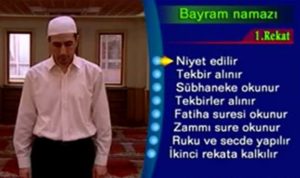WATCH: Nasl Klnr Bayram Namaz Video – What Is The Best Way To Say The Eid Prayer? Explained: As Eid-ul-Fitr approaches in just a few hours, preparations are at an all-time high, and people are fully immersed in Eid preparations. But do you really understand how to pray for Eid? If not, this post is for you because it explains how to perform Eid prayers (namaz). This article contains information on the Eid prayer. As we all know, Eid prayers are held in the early hours of the morning. We shall outline the necessary processes for doing Eid prayer in the sections below. It is recommended that you read every section of this essay because it contains everything you need to know about Eid prayer. Continue reading to discover the steps of the Eid prayer.

WATCH: Bayram Namazı Nasıl Kılınır Video
Muslims all over the world are looking forward to their auspicious event, which occurs just once a year. Eid-ul-Fitr is observed after the crescent moon has completed one cycle. Eid-ul-Fitr, which follows Ramadan by thirty days, is a three-day festival. Muslims all throughout the world chant namaz and visit their relatives with sweets and presents on this festival. Please see the next part to understand how to recite the Eid prayer correctly and without making any mistakes.
How To Perform The Eid Prayer?
Eid prayer is unquestionably distinct from daily prayer (namaz). First and foremost, everyone who wishes to do the Eid prayer must first perform the “Fajr” prayer, which takes place daily at roughly 5:00 a.m. After performing the “Fajr” prayer successfully, the person will be able to perform the Eid prayer. In Eid prayers, there are six “takbirs.” Please read the following section to understand about the Eid prayer process.
After the Imam silently recites the “Subhanakalla humma” prayer and the congregation silently recites the same prayer after intending the Rakat Eid prayer, Takbir is said and hands are knotted after elevating to ear level. After reciting, hands are lifted to ear level and then placed down free, which is the first Takbir, and then hands are elevated to ear level and put down free, which is the second Takbir, and finally hands are knotted at the level of the abdomen or navel, which is the third Takbir. Before going to Ruku in the second Rakat, the Imam recites “Surah Fatiha” and continues as if it were a normal prayer, and before going to Ruku in the second Rakat, Takbirs are recited three times as they were in the first Rakat, and then the Imam and congregation prostrate.




















